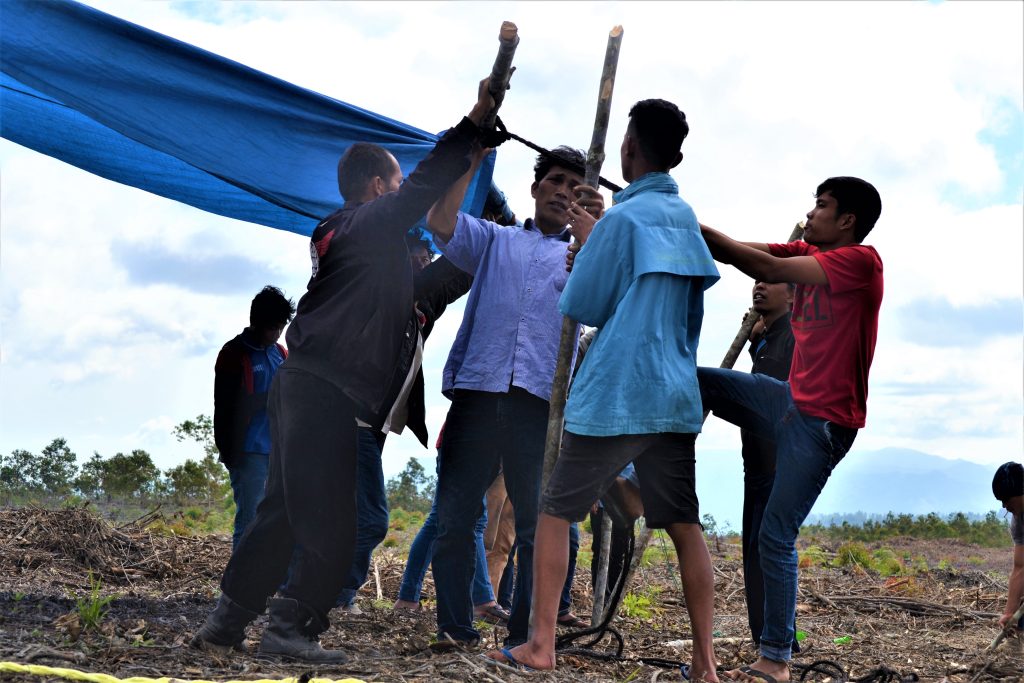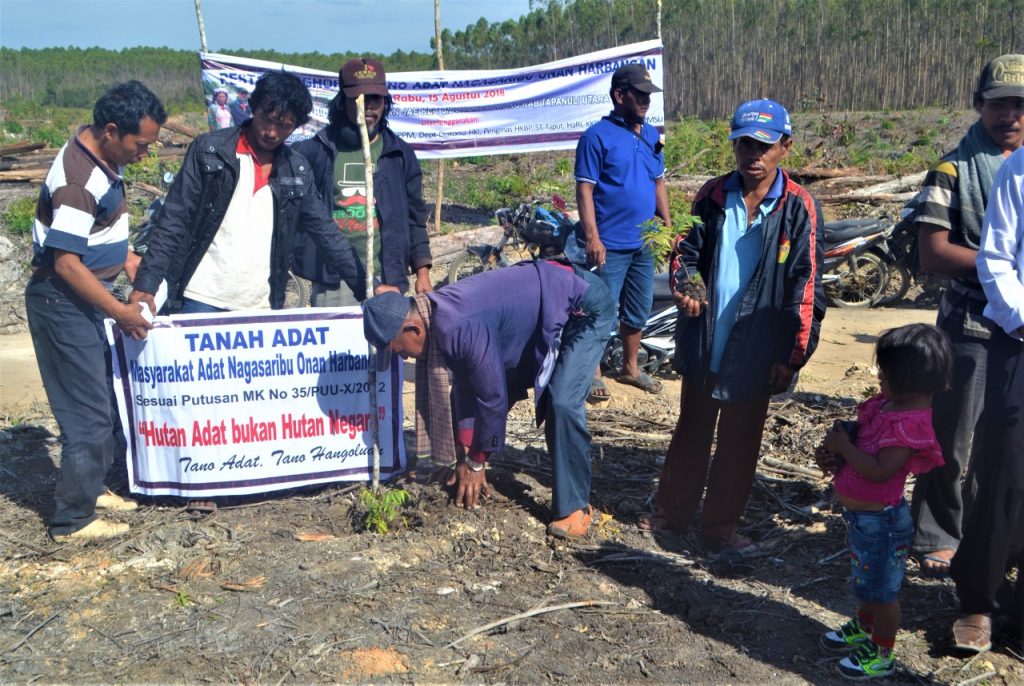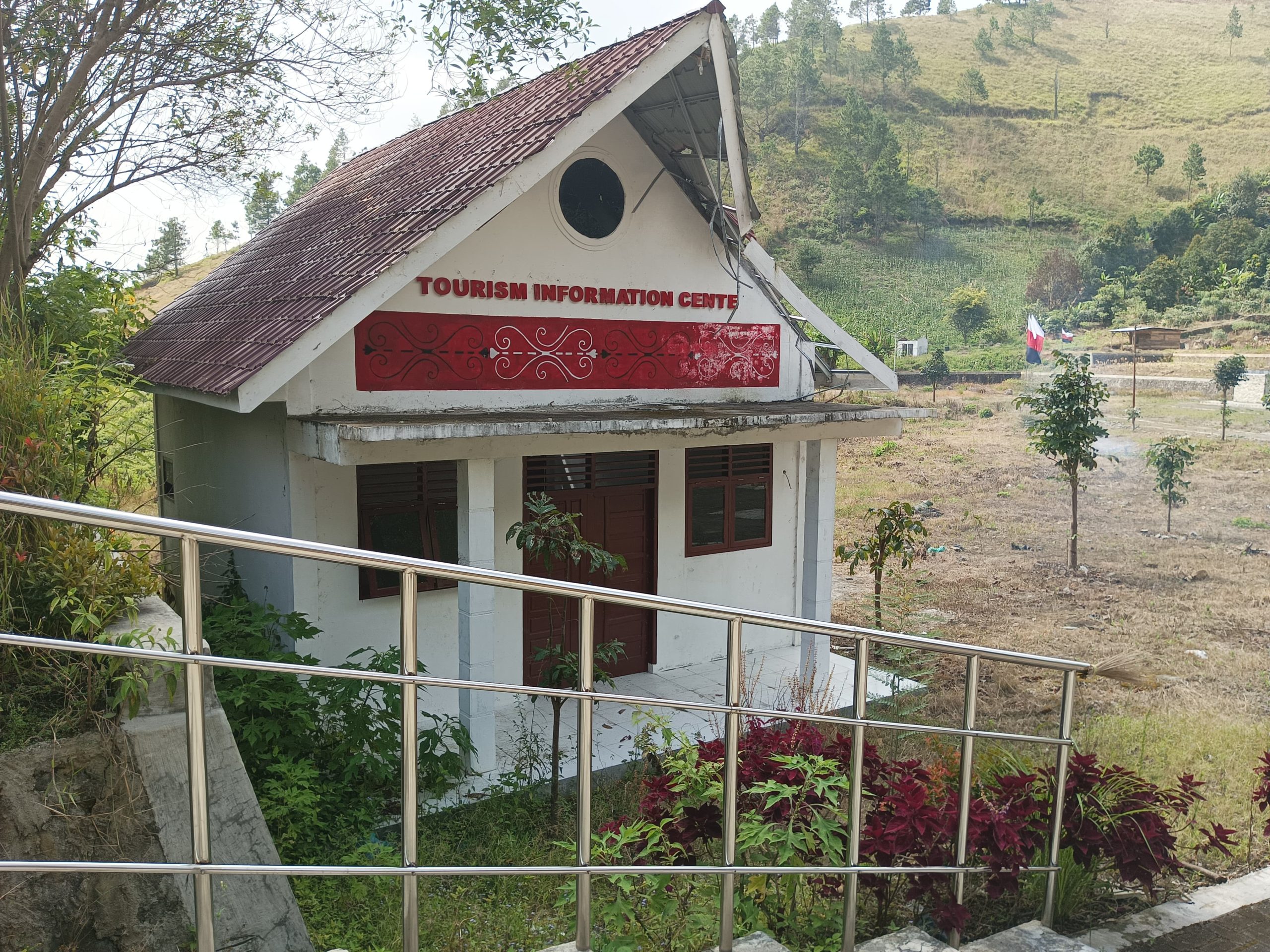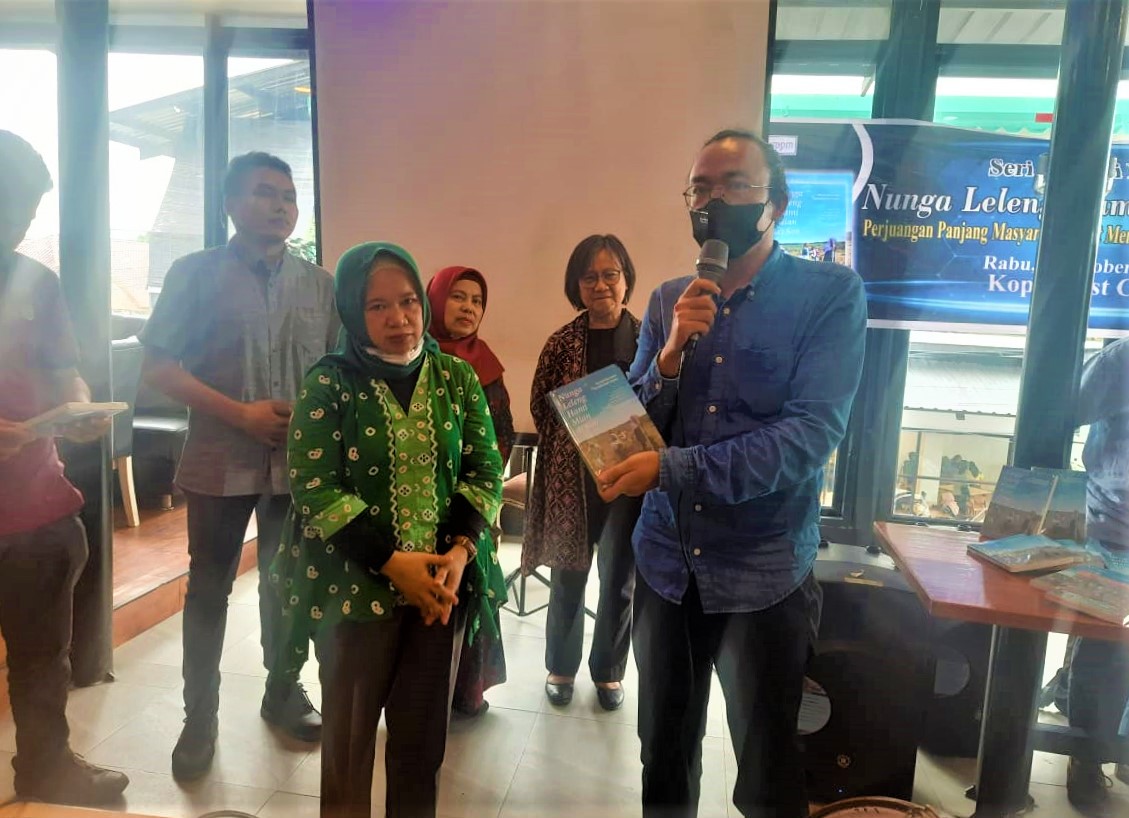Initial Introduction to KSPPM
That afternoon around 3pm, one of the staff from the Community Initiative Study and Development Group (KSPPM) and I had to visit one of the villages in Nagasaribu Onan Harbangan. We visited to discuss agrarian conflict resolution schemes, considering that in the near future they will have guests from the Ministry of Environment and Forestry (KLHK). Arriving in Nagasaribu, we went straight to the house of one of the residents who happens to be a church elder there, Op. Natan Simanjuntak. Not long after we talked, a resident named Op. Gres Simanjuntak came. He is also a traditional leader of Nagasaribu. Op. Gres came to make sure that we had arrived, because previously Pastor Advent Nadapdap (a pastor who had served in Nagasaribu) had informed that KSPPM staff wanted to visit and talk to the Nagasaribu community.
After dinner, we went to the place of discussion, the house of Op. Gres Simanjuntak. Warmth, sincerity and simplicity were my first impressions of the Nagasaribu community. The next day when we arrived at Sopo Parapat, we told the story to Suryati Simanjuntak (KSPPM Executive Secretary at the time). After listening to our story, Suryati invited us to visit Nagasaribu again.

A week later, we visited Nagasaribu Onan Harbangan with other KSPPM staff. Arriving in Nagasaribu, we went straight to Op. Gres Simanjuntak’s house. Op. Gres then told us that social life in Nagasaribu is still bound by customs. Any conflict in Nagasaribu is still resolved by custom. “We can prove that there have been no cases of persecution, infidelity and theft that have reached the police,” he said. Op. Gres also added that the traditional apparatus in Nagasaribu is still complete. The customary objects left by King Sisimangaraja are still kept; customary law still exists and is carried out. “To carry out this customary law we have a Raja Patik (like a judge) in Nagasaribu,” continued Op. Gres. There were many other interesting stories told by Op Gres. But before we knew it, the afternoon had arrived. Suryati told us that we had to go home. “But will come again to listen to amang (father) story,” said Suryati.
After meeting several times, KSPPM became more familiar with the community. Our discussion also began to lead to their haminjon (frankincense forest) spear which was claimed as a state forest area and PT Toba Pulp Lestari (TPL) concession. Finally, KSPPM officially assisted the community, and began to jointly complete various documents, such as history, customary law, customary institutions, customary objects, and conduct participatory mapping of customary territories. The community has also come to the KSPPM centre several times, both in Siborong-borong and Parapat.
But things are not as easy as one might think. At the beginning of KSPPM’s assistance in Nagasaribu, most of the community was still confused about what they were fighting for. Even in several visits to the village, KSPPM staff felt how the community was still ignorant and apathetic. This condition lasted for almost 2 years, namely 2016-2018.
But changes began to appear in June 2018, when KSPPM celebrated Environment Day in Nagasaribu. The community was enthusiastically involved. At that time all the community, young and old, gathered in the village and participated in planting ingul trees in the haminjon forest of PT TPL’s former eucalyptus plantation. The commemoration of Environment Day was the beginning of the good organisation in Nagasaribu. Furthermore, various commemorations such as National Farmers’ Day, Human Rights Day, Earth Day are increasingly being celebrated in Nagasaribu.
KSPPM began to be accepted, ignorance and apathy did not appear anymore. The community began to get organised and began to get involved in various activities outside Nagasaribu, such as demonstrations, hearings and training. This improved organising process in Nagasaribu is also inseparable from the KSPPM Network such as students, churches, universities, civil society organisations (CSOs), both at home and abroad. Countless people have visited Nagasaribu for research, learning, and listening to their stories of struggle.

As time went by, the confidence of the Nagasribu indigenous people began to grow. The community began to dare to argue with the company when the company wanted to do logging in their haminjon forest. They also began to dare to re-manage their customary territories that were seized by the company. Op. Gres said that before getting acquainted with KSPPM, the community at the end of each year still hopes for assistance such as basic necessities and Christmas money from PT TPL. Not much is obtained and not all people get it, but the community is grateful for it. “But that was then, now it’s not anymore,” said Op. Gres. Op Gres seemed to want to emphasize that now they have changed, not like before.
This confidence is inseparable from their involvement in organisations. The Nagasaribu community joined the North Tapanuli Farmers Union (ST Taput) to expand their network and gain knowledge. On the third week of every month they go to Sopo Siborong-borong to discuss with farmers from various regions.
In 2019, the North Tapanuli Regency (Taput) Government built a road to Nagasaribu from Purba Sinomba Hamlet. Not only that, inadequate health facilities have also begun to be addressed by placing a village midwife in Nagasaribu. This was the result of an action taken by the community during the 2018 National Farmers’ Day celebration at the Taput Regent’s Office.
The Nagasaribu community also managed to inspire neighbouring villages to fight. Natinggir was inspired by the struggle of Nagasaribu Onan Harbangan. In 2019, Op. Gres together with Jimmi Simanjuntak as community leader invited KSPPM to Natinggir to start the struggle to defend customary land. Such is the Haunatas community. Inspired by Nagasaribu’s struggle, they asked Nagasaribu to share his story. According to KSPPM, one of the reasons why Nagasaribu is an inspiration for Natinggir and Haunatas is the success of the Nagasaribu community in prohibiting company activities in their customary territory and successfully planting their customary territory with various plants such as land rice, pineapple, passion fruit and other hard plants without interference from the company. The community also managed to close the company’s access to the customary area without any resistance from the company. Their migrant children also supported them, especially in funding. ** [Rocky Pasaribu]









